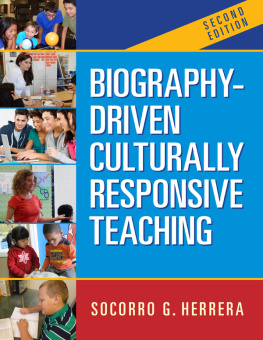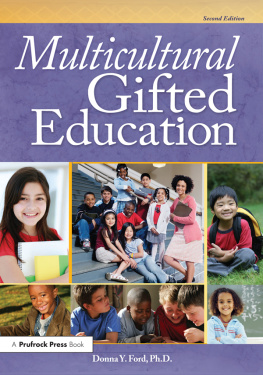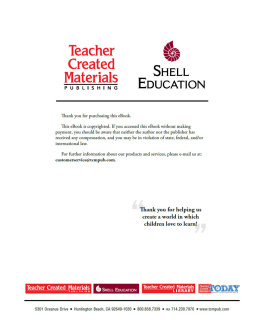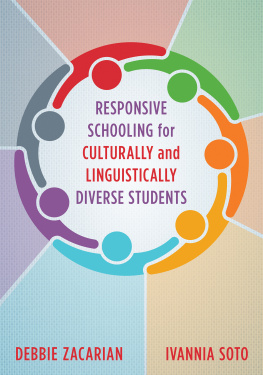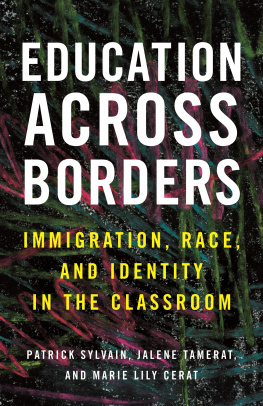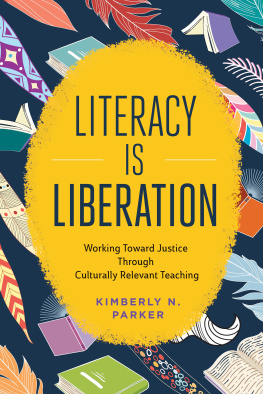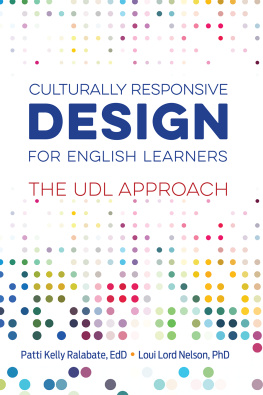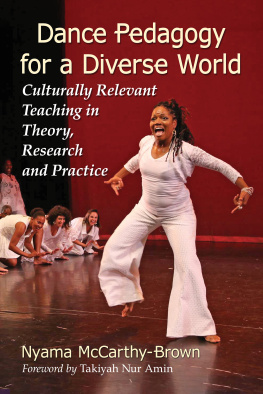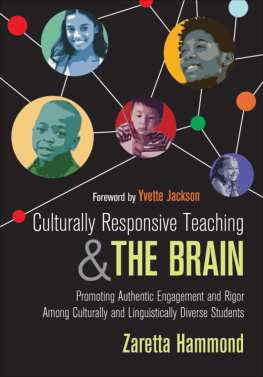Biography-Driven Culturally Responsive Teaching
2nd edition
SOCORRO G. HERRERA
Foreword by Geneva Gay


Worksheets and supporting instructions for the following instructional aids and strategies are available for free download from the Teachers College Press website: www.tcpress.com
Hearts Activity, , page 21
Reflection Wheel Journal, , pages 57, 158
CLD Student Biography Card, , pages 62, 63, 160
Writing Content and Language Objectives, , page 88
Biography-Driven Lesson Planning, , page 90
DOTS Strategy (Determine, Observe, Talk, Summarize), , pages 161, 162
Mind Map, , pages 163, 164
Vocabulary Quilt, , pages 165, 166
Ignite, Discover, Extend, Affirm (IDEA), , pages 167, 168
Thumb Challenge, , pages 169, 170
Uncover, Concentrate, Monitor, Evaluate (U-C-ME), , pages 171173
Quick Guide to Biography-Driven Instructional Concepts, , page 174
Biography-Driven Instruction: Discussion Guide, , pages 175185
Permissions credit lines for reproduced figures appear below the individual figures.
Published by Teachers College Press, 1234 Amsterdam Avenue, New York, NY 10027
Copyright 2016 by Teachers College, Columbia University
All rights reserved. No part of this publication may be reproduced or transmitted in any form or by any means, electronic or mechanical, including photocopy, or any information storage and retrieval system, without permission from the publisher.
Text Design: Lynne Frost
Library of Congress Cataloging-in-Publication Data
Names: Herrera, Socorro Guadalupe.
Title: Biography-driven culturally responsive teaching / Socorro Herrera; foreword by Geneva Gay.
Description: New York, NY: Teachers College Press, [2016] | Includes bibliographical references and index.
Identifiers: LCCN 2015036490| ISBN: 9780807757505 (pbk.: alk. paper) | ISBN: 9780807774571 (e-book)
Subjects: LCSH: Linguistic minoritiesEducationUnited States. | Culturally relevant pedagogyUnited States. | Multicultural educationUnited States. | EducationBiographical methods.
Classification: LCC LC3731 .H476 2015 | DDC 370.117dc23
LC record available at http://lccn.loc.gov/2015036490
ISBN: 978-0-8077-5750-5 (paperback)
ISBN: 978-0-8077-7457-1 (ebook)
For your limitless love and commitment to my craziness, I will forever be grateful
My children Dawn, Kevin, Jesse, and Isamari
Love you always!

Contents
Foreword
B OTH CONSENSUS AND CONTENTION exist among educators about teaching ethnically, racially, and culturally diverse students. The consensus is more ideological and the contention is largely methodological. The consensus tends to be on issues of why, while what and how are more contentious topics. For example, most educators accept that ethnic, racial, cultural, and linguistic differences do exist among students, and that they have profound effects on educational opportunities and outcomes. Contentions are more likely to occur around how to understand these differences and what to do about them. Some educators promote bypassing these existential realities and dealing with diverse students from assumed higher philosophical planes, codified in phrases like all students should be treated the same, I am color blind; I see no difference when I look at students, and in the final analysis individuality is what really counts. The counterargument is that all students are culturally socialized, and they come to school with different social, ethnic, and experiential identities and heritages. In fact, diversity is inherent to the human condition and, invariably, it is embodied culturally. Since human culture and difference are indisputable, educational experiences for diverse students should likewise be culturally diverse. These claims are particularly compelling for racial and linguistic minority students.
Both perspectives sound even internally contradictory at times. For example, many educators who argue for treating all children the same simultaneously endorse honoring their individuality, and proponents of embracing cultural diversity concede that all individuals within cultural groups are not culturally identical. But, under closer scrutiny, what initially appears to be contradictory is not so. Instead, these claims symbolize human complexity and are indicative of the challenges (and opportunities) educators must address in creating authentic culturally responsive programs and practices for ethnically, racially, and linguistically diverse students. Yet the question of how is often so daunting for some that doing nothing is the response. Underlying the sense of helplessness is another point of contention. This one is between theorists or conceptualizers and practitioners. The practitioners accuse the theorists of proposing lofty and abstract ideals without showing how to put them into practicethat is, how to get from idealized notions about cultural diversity into the exigencies of actual and authentic classroom actions. Conversely, some cultural diversity scholars view the efforts of practitioners as inadequate because of a lack of knowledge and genuine commitment to educational equity and excellence for ethnic and racial minority students. Both sets of perspectives have some valid points. Undoubtedly, theorizing on cultural diversity and multicultural education needs to include more functional strategies for practical implementation, and classroom practices need to be better aligned with theory. In the meantime, as these debates and divides between different segments of the professional community continue, many children of color are still being educationally neglected and left behind by teachers and other educators who are charged with doing the reversethat is, opening up gateways of opportunity and making high-quality education accessible to them.
Interventions are needed to mediate these gaps between multicultural education theory and practice. A reasonable place to look for them is in the emerging body of new scholarship in the field. Many of these scholars have experienced the theorypractice divide personally because they were active classroom teachers not so long ago, and they received their academic degrees relatively recently. Socorro Herrera is one of these new generation scholars, and she does a masterful job of mediating multicultural education theory and practice, specifically for culturally and linguistically diverse students, in Biography-Driven Culturally Responsive Teaching. She builds compelling and cogently constructed ideological and methodological bridges for teachers to cross over between theory and practice, as well as among different perspectives and paradigms within theory and practice. In so doing, she exemplifies many of the values, beliefs, and actions proponents consider essential to multicultural education and culturally responsive teaching. Among these are blending multicultural sensitivity and academic rigor; integrating cultural diversity into subject matter content and all other aspects of teaching and learning; and promoting academic success without compromising the cultural identities and affiliations of ethnically, racially, and linguistically diverse students.

